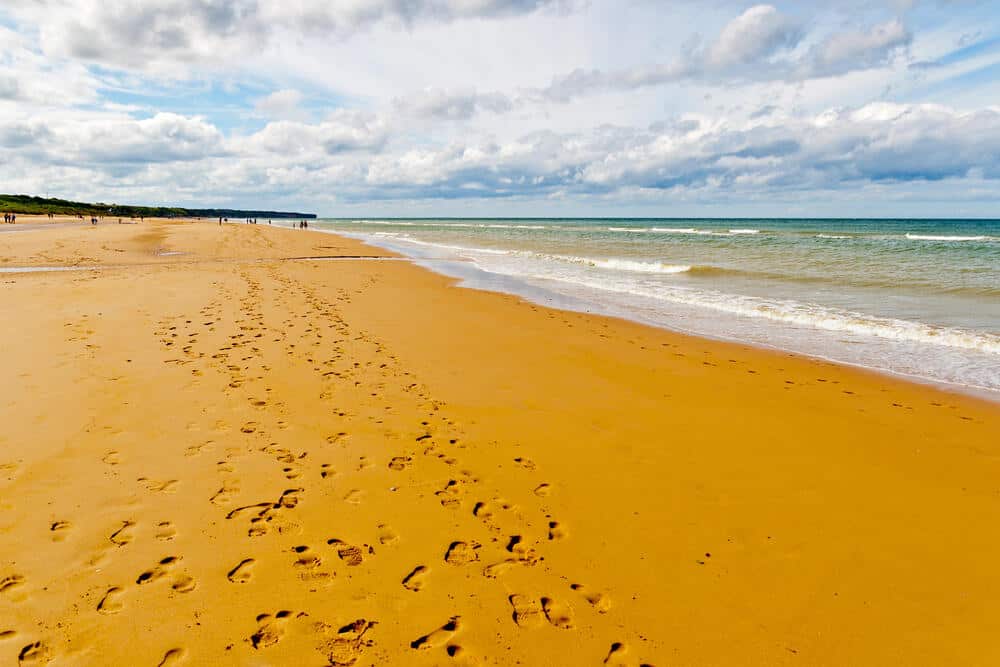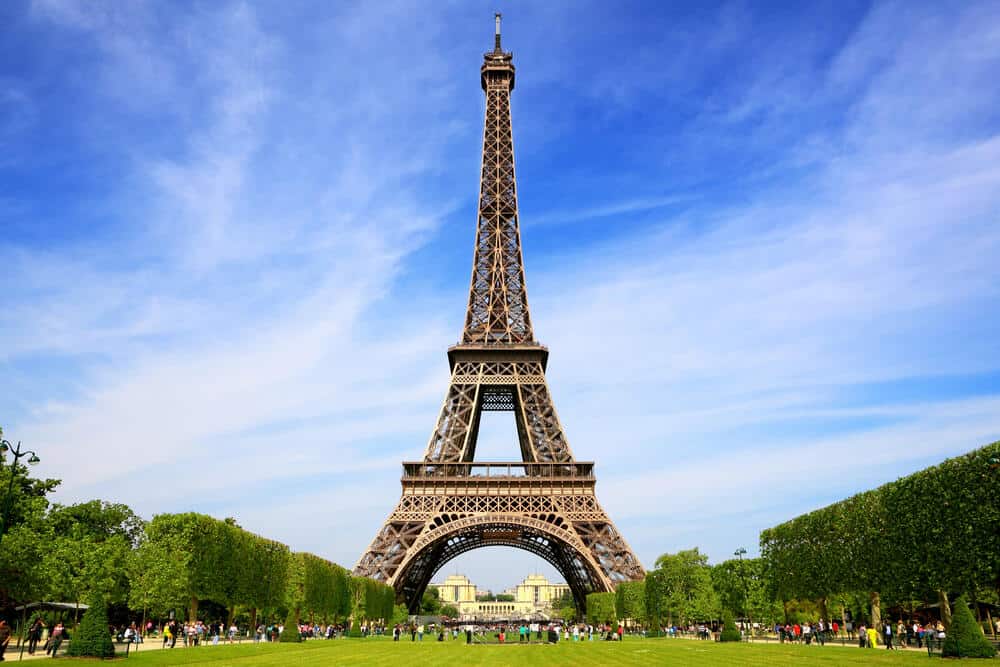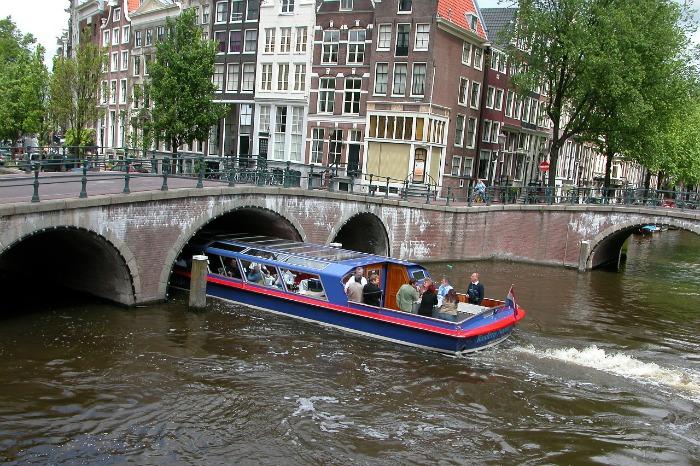Discover Europe’s Fascinating History: Top 7 Landmarks to Visit
Europe has a rich heritage, well represented by the countless historical landmarks across its many beautiful landscapes.
Some are iconic structures that celebrate moments of great joy.
Others are solemn monuments that honour noble bravery and serve as a stark reminder of intense turmoil and darker moments from its rich and sometimes challenging history.
And when we visit these incredible landmarks, we discover more than just the past.
We uncover more about what made Europe into the colourful and vibrant place it is today.
So, join us as we look at the top 7 landmarks to visit where you can discover Europe’s rich and fascinating history.
1. Normandy Beaches: Omaha, Utah, and Gold, France

On 6 June 1944, nearly 160,000 Allied troops landed on a 50-mile stretch of the French coastline.
This was D-day, a crucial turning point in the Second World War.
These beaches, situated in Normandy, attract war history buffs and veterans in their droves.
It’s not surprising that an entire tourism industry has evolved around these famous beaches.
But for deeper insights into the role these shores played in World War 2, why not take a Band of Brothers Tour to take your experience to the next level .
The tour brings the underlying themes of bravery, solidarity, and the futility of war to life, with highly engaging, interactive, and contextual content.
Band of Brothers tours bring history to life at WW2 sites across Europe.
2. The Acropolis, Athens, Greece

Greece offers travellers exciting island adventures, hidden gems and an inspiring list of inspirational landmarks to visit.
For a truly noteworthy historical adventure, Athens is the definitely place to be.
Here you will find the Acropolis, an historic citadel perched on top of ancient rocks that have seen the greatest of empires rise and fall.
The Acropolis was home to the Parthenon, a magnificent temple dedicated to the Greek goddess Athena.
Built in the mid-5th century BCE, the remains of this palace of pagan worship are now a UNESCO World Heritage site.
Come and see the remnants of a time when the gods were said to walk among mortals.
Guided tours are available, but it’s best to plan your visit for early in the morning or later in the evening to avoid the bustling crowds.
3. The Eiffel Tower, Paris, France

The Eiffel Tower’s construction served two important purposes.
It served as a symbol of French industrial prowess and Paris’ entry into the 1889 Exposition Universelle (World Fair).
It also commemorated the centennial anniversary of the French Revolution.
This enormous triangular tower that dominates the Parisian horizon was constructed primarily from open-lattice wrought iron.
It still stands proudly today – dominating the Parisian skyline – welcoming tourists from across the world.
To skip the long queues, consider booking your Eiffel Tower viewing ticket online, with a priority pass.
The Eiffel Tower is open to visitors from 9:00 am until 11 pm.
For a real treat, plan your visit for the evening, when the tower is lit up beautifully against the starlit dark sky.
4. The Colosseum, Rome, Italy

The elliptical stone and concrete amphitheater known as the Colosseum was constructed between 72 A.D and 80 A.D.
An excursion to the Colosseum makes for a memorable Rome holiday, but its ancient activities were even more memorable and often terrifying.
Located in the center of Rome, this mega-structure once hosted theatrical representations of Roman mythology, battle reenactments, and events featuring wild animals.
It is also known as the arena where Roman gladiators fought to their deaths.
The Roman Colosseum is one of the New Seven Wonders of the World, so don’t let a trip to Rome end before you’ve visited this landmark.
Guided tours are available, but it gets pretty crowded, so our top tip is to try to arrive early and visit during the week.
5. The Alhambra, Granada, Spain

One of Spain’s major tourist attractions is a UNESCO World Heritage site known as the Alhambra.
As the only preserved palatine city of the Islamic period, this stunning complex of rooms, gardens, and water fountains is one of the highlights of any tour of this region of Spain.
Guided tours are available and are a very informative way to enjoy this stunning landmark.
The best time to visit is when the gardens are their most vibrant, in the springtime (March/April).
However, be aware this is also the busiest time to explore the Alhambra.
6. Dachau Concentration Camp, Munich, Germany

Dachau Concentration camp in Munich, Germany, can never be described as the highlight of any trip, however it is an incredibly important place to visit.
It is a stark reminder of an incredibly painful period of European history that must never be forgotten.
For that reason, we recommend that you visit it, to honour those souls lost, so that they may be remembered.
It’s absolutely no secret that thousands of people were imprisoned, abused, and killed here at the hands of the Nazi forces during WW2.
If you visit this site, be as quiet as possible, and be respectful of the memories it holds during your time there.
7. The Tower of London, London, England
The Tower of London has been an iconic structure on the English landscape for almost a millennium.
Built by William the Conqueror, the first Norman King of England, it has been added to over the centuries to serve many roles in one of Europe’s most famous capital city’s.
In its time, the Tower of London’s buildings and grounds have been a prison and a palace, a fortress and a treasury, and even a zoo.
Sadly, its World Heritage status is threatened by the City of London Corporation’s draft policies for tall buildings, which in our opinion is a crying shame.
Final Thoughts
These 7 landmarks testify to some of the most significant periods of world history.
Incredibly though, they represent only a very small fraction of the total fascinating landmarks across there are to visit Europe.
Other reminders of the highs and lows of humanity still stand, in steel, sand, and stone, to testify to the enduring human spirit and some of the most incredible stories.
We believe that a European history tour is one of the most meaningful ways you can spend your time on vacation.
So get to know Europe better by, planning a trip to at least one of its most fascinating landmarks and make the most of the experience by taking a popular guided tour.
You are bound to learn, not only the important historical facts, but also the stories that only the local tour guide would be able to tell you.
Photo Credit: Depositphotos
Discover more from Zena's Suitcase
Subscribe to get the latest posts sent to your email.





